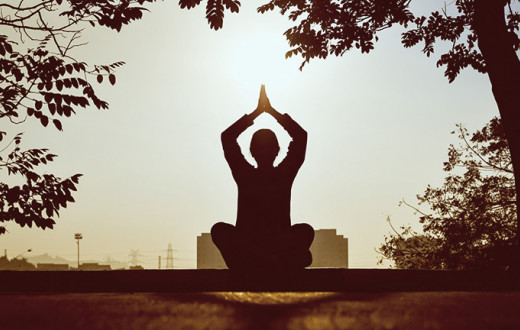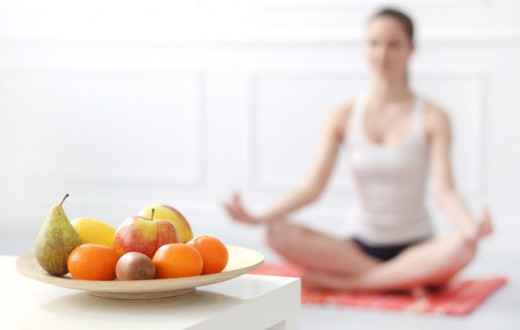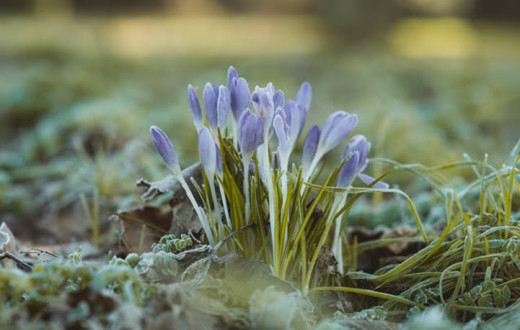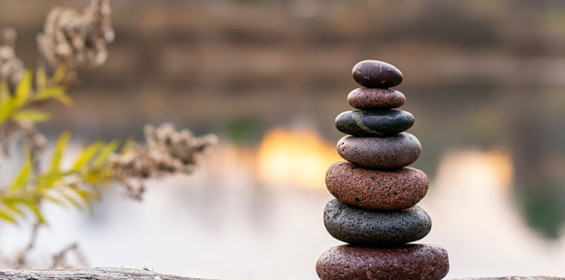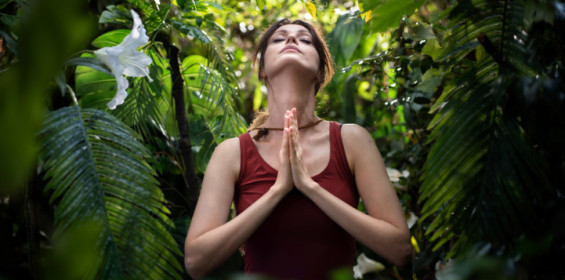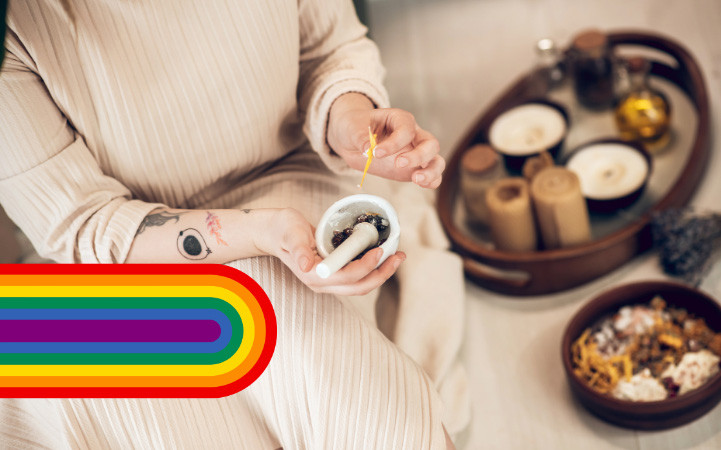
Happy Pride! Pride is a time to celebrate our LGBTQ+ loved ones. "LGBTQ+" stands for Lesbian, Gay, Bisexual, Transgender, Queer or Questioning. The plus includes other sexual orientations and gender identities.
Let’s examine how to better understand the past and present dynamics of the LGBTQ+ community and see how Ayurveda can contribute to the conversation.
Gender and sex according to modern medicine
Sex refers to biological and physical differences between males, females, and the intersex community. Sex assigned at birth is 'natal sex.' Intersex is an umbrella term for people who are born with one or more traits in their chromosomes, genitals, hormones, or internal reproductive organs that don’t fit the typical male or female patterns. This is a natural biological occurrence, and 2% of the world’s population is intersex.
Unfortunately, intersex individuals often have non-consensual surgeries. These surgeries can happen at birth or as toddlers. In a 2018 study, over half of these individuals rated their mental health as fair or poor, and many had chronic health issues.
Gender can differ from natal sex and is a broad spectrum of how people identify. These identities include transgender, nonbinary, or gender-expansive people. Transgender and non-binary people are increasingly the target of outrageous hate crimes. Coming out as transgender or nonbinary is dangerous and filled with many disproportionate challenges.
A little history of the LGBTQ+ community
Before colonization, Indigenous societies were LGBTQ+ affirming. Known as ‘Tritiya Prakriti’ or Third Gender in India and Two-spirit identities among Native American communities, LGBTQ+ were not ostracized as they often are today. In particular, Vedic communities honored those who identified their gender differently than the binary choice between male and female and heterosexual relationships.
During Britain’s colonization of India, they banned homosexuality in 1831. They also banned Ayurveda, India’s 5,000-year-old traditional form of medicine, in 1866.
Today, 64 countries criminalize homosexuality, of which 29 are former British colonies. Though India decriminalized homosexuality in 2018, homophobia persists.
Public health crisis
Nearly ten percent of the world’s population has come ‘out’ as LGBTQ+, though it is still risky to come out. They have struggled and continue to fight for their basic rights. In the US, it wasn’t until 1973 that the medical community no longer considered being homosexual as a mental illness. But inequity and discrimination persist. The LGBTQ+ community continues to face health challenges because of unequal rights and health inequity. This has led to a public health crisis.
- Every 45 seconds, an LGBTQ+ kid attempts suicide
- 40% of LGBTQ+ folks faced at least one negative healthcare experience in the past year
- They are three times more likely to delay or avoid care due to healthcare discrimination
- 69% Intersex, 49% Transgender, and 17% LGBQ don’t reveal their identities to providers
- Overall, the community experiences four times the violence other groups do
Gurudev Sri Sri Ravi Shankar, the founder of The Art of Living, recently talked about suicide in the LGBTQ+ community, especially among trans people.
“We should not discriminate against anybody. Gender equality is the word we must always use. We must honor every gender.”
Gurudev has also spoken about decriminalization in India back in 2016.
Last year, I wrote about how meditation can help by making the world more inclusive for the LGBTQ+ community. You may enjoy reading the article Happy Pride: How Meditation Helps Create an Inclusive World.
Status of the LGBTQ+ community in Ayurveda
In India, Ayurveda is seen as a form of medicine. In the US, it is seen as a complementary, holistic, and natural form of healing. Currently, protocols for the care of the LGBTQ+ community depend on individual providers. There are instances of the heinous ‘conversion therapy’ in India, the US, and elsewhere despite Ayurveda’s history and current popularity. There is, sometimes, a blurring of lines between illness and LGBTQ+ identity.
Ayurveda and Vedic references
Three Prakrits or Constitutions exist. They are, ‘Pums’ or Male, ‘Stri’ or Female and ‘Kliba’ (Napunsak) or LGBTQ+.
Napunsak is incorrectly translated as infertile. This differs from their identity, which includes all gender identities and sexual orientations.
I am postmenopausal and infertile.
A monk could be fertile but celibate or infertile.
A child and an elderly person are infertile.
Many LGBTQ+ and straight people are fertile, and some are not.
More than 21 Ayurvedic texts discussed 50+ LGBTQ+ identities. Ayurveda outlined their conception and other aspects of their health.
Why are people LGBTQ+?
People are LGBTQ+ due to divine or karmic, genetic, or natural causes. They can also be due to maternal or paternal factors.
Some later texts blur and incorrectly interpret LGBTQ+ identities with illness.
Ayurvedic Management of the LGBTQ+ Community
In my primary research, I interviewed 30 Vaidyas (Ayurvedic doctors) in India and the US. I also interviewed Dr. VS Priya, India’s first transgender doctor, and an Ayurvedic Vaidya. She shared how important representation is. Many people come to her pretending to be affected by gastrointestinal or other issues. Instead, they talk about being LGBTQ+ and related healthcare concerns.
These were the Vaidyas' findings and recommendations.
Findings:
Healthcare barriers include stigma, lack of data collection, institutional non-discrimination policies, lack of training and affirming care.
All providers suggested trauma-informed personalized care.
During transitioning, integrative care with diet/lifestyle guidance was advised. Here, I'd like to point out that all major medical groups support gender-affirming care for transgender individuals.
Most providers believe people are LGBTQ+ because of natural, divine, or genetic causes.
Almost half the Vaidyas refer people to an allopath, another Vaidya, or a psychiatrist based on their needs.
Providers in India expect added challenges to mental, physical, and sexual health. These are primarily due to abuse and stigma. Providers in the US expect mental and sexual health issues. They also expect issues related to healthcare access, cancer, and violence.
Recommendations:
Education Module—Only 27% of Indian Vaidyas worked with the ‘out’ LGBTQ+ community, 89% in the US. However, over 80% of all providers felt the need for a module to educate them on managing Ayurveda.
You may enjoy reading 8 Myths About Trans and Nonbinary People, Debunked
Best Practices and Public Health Measures include training and addressing stigma. They include DEI (diversity, equity, and inclusion) training and data collection. They also address confidentiality concerns and suggest banning “conversion therapy.”
Conclusion
Knowledge dispels misinformation. We need more studies on the community's healthcare needs. But beyond training, this is a journey from the head to the heart.
To the LGBTQ+ community, we see you and support you. If you’re in crisis or need support, here are some resources.
I would also like to mention that Ayurveda considers meditation a top tool and sees it as key to managing stress. The Art of Living’s SKY Breath Meditation is based on evidence and enhances health and well-being. The Art of Living Part 1 course teaches SKY to the general public. Register here.
Acknowledgments
I’m grateful to my Research Guide, Vaidya Princy Prasad, and Vaidya Jayarajan Kodikannath, the Director of Kerala Ayurveda USA. I'm also grateful to the entire faculty of Kerala Ayurveda. I'm wholeheartedly grateful to everyone in the Ayurvedic community.
My research was reviewed by experts and presented at the 2024 National Ayurvedic Medical Association Conference. GLMA, Health Professionals Advancing LGBTQ+ Equality, has also selected it to present at their conference, which will be held in October 2024. I am deeply grateful to the Art of Living and to be able to write this article during Pride month.
Disclaimer: The opinions expressed in this article are the author's own and do not necessarily reflect the views of the Art of Living Foundation or its founder, Gurudev Sri Sri Ravi Shankar.








